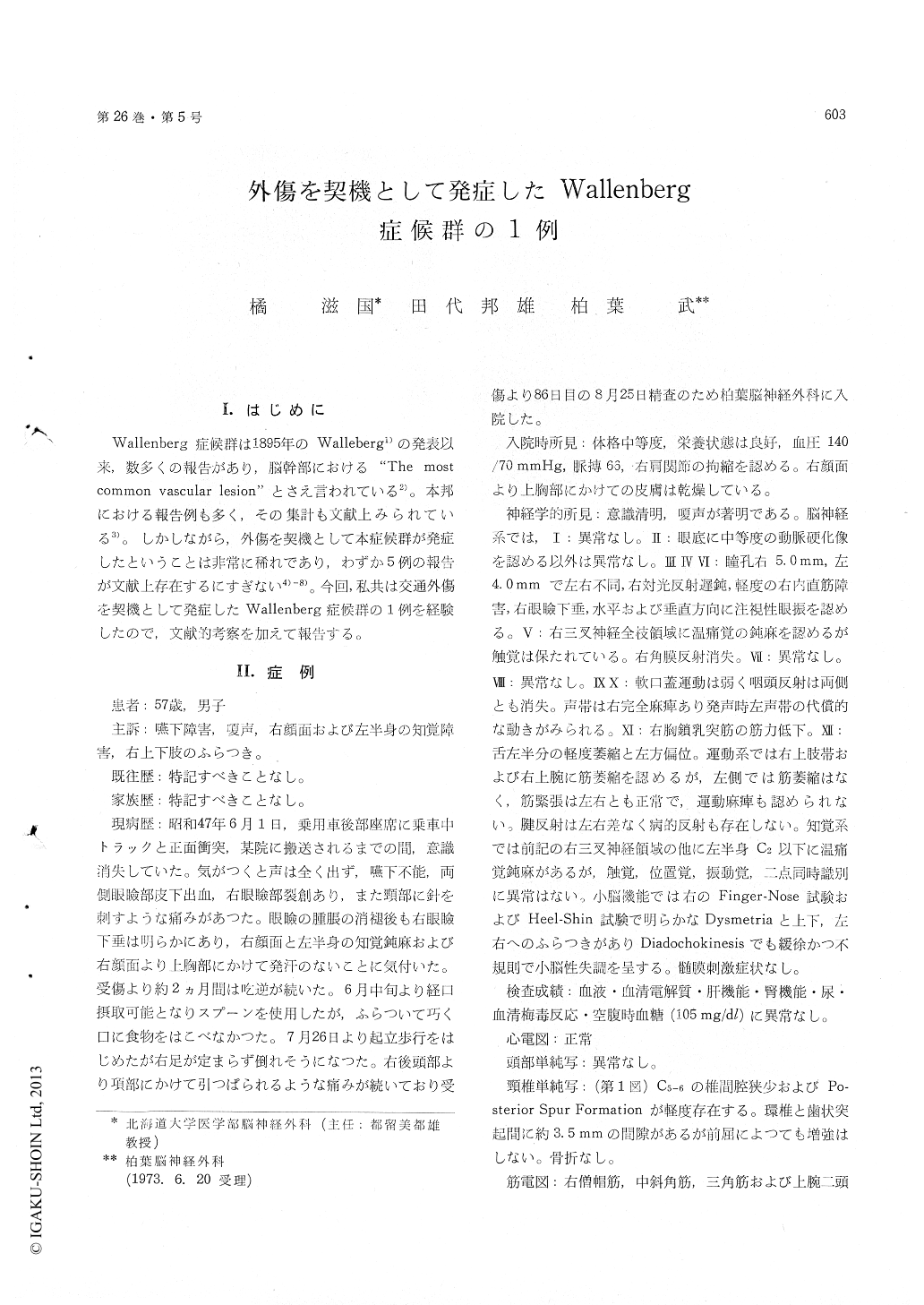Japanese
English
- 有料閲覧
- Abstract 文献概要
- 1ページ目 Look Inside
I.はじめに
Wallenberg症候群は1895年のWalleberg1)の発表以来,数多くの報告があり,脳幹部における"The mostcommon vascular lesion"とさえ言われている2)。本邦における報告例も多く,その集計も文献上みられている3)。しかしながら,外傷を契機として本症候群が発症したということは非常に稀れであり,わずか5例の報告が文献上存在するにすぎない4)−8)。今回,私共は交通外傷を契機として発症したWallenberg症候群の1例を経験したので,文献的考察を加えて報告する。
Following an automobile accident, a 57 year-old man developed hiccups, hoarseness, difficulty in swallowing, unsteadiness of right upper and lower extremities, and sensory disturbances of right face and left side of the body. Neurological exami-nations were compatible with classical Wallenberg's syndrome. Cervical spine films showed slight pos-terior spur formation and narrowing of interverte-bral space between C5 and C6, (Fig. 1). Horner's syndrome was present, (Fig. 2). Right retro-axillary arteriogram failed to fill right vertebral artery (Fig. 3). Left retro-axillary arteriogram disclosed slight narrowing of vertebral artery between PICA and basilar artery, as well as tortuosity of basilar artery. Right PICA was not identified (Fig. 4a, 4b).
Thrombosis of vertebro-basilar arteries after neck manipulation has been well known since the publi-cation by Pratt-Thomas and Berger9)in 1947, how-ever only five surviving cases with Wallenberg's syndrome following neck injuries have been docu-mented in the literatures (Table 1).
Considering that the chiropractic manipulation is the major cause in the most of the reported cases, rotatory movement of neck is an important mechanism for circulatory distrubance of vertebral arteries, as already documented by injection of the artery in a cadaver12).
Our patient was discharged with conditions un-changed after 3 months' hospitalization.

Copyright © 1974, Igaku-Shoin Ltd. All rights reserved.


